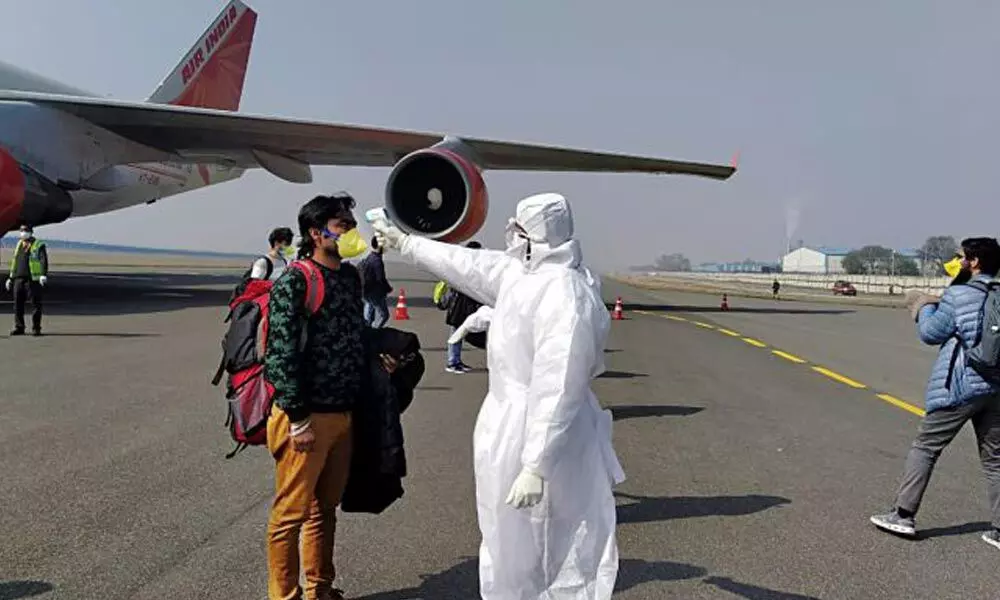Indian airlines may post $4.1-bn consolidated loss in FY22
CAPA projects domestic traffic of 80-95 million airline passengers in FY22, up from 52.5 million in FY21, but well below the close to 140 million passengers in FY20
image for illustrative purpose

The projected losses could rise further if necessary recapitalisation comes in the form of debt, for which borrowing costs will need to included. At this stage it is not known how recapitalisation will be funded. Air India and IndiGo combined will represent around $4.5 billion of the approximately 8.0 billionn of losses
After taking into account the impact of the second wave, CAPA advisory India airline outlook's proprietary forecasting model projects domestic traffic of 80-95 million airline passengers in FY22, up from 52.5 million in FY21, but well below the close to 140 million passengers in FY20. This projection does not take into account a third wave.
International traffic is projected to be in the range of 16-21 million passengers, and again, based on current settings it is likely to be constrained towards the lower end of the range because of border restrictions, market access and other strategic risks. However, international traffic will be particularly sensitive to discrete decisions taken by governments on such matters, which cannot be predicted.
As with domestic traffic, the second half of the year is expected to be far more positive. Partly due to the easing of restrictions and the expansion of bubble agreements, but also due to the prospects of increased international capacity deployment by Indian carriers - Vistara is likely to launch routes to North America and other long haul destinations with its fleet of four 787s.
Also expected are that Indian airlines will lose a consolidated $4.1 billion in FY22, similar to that in FY21. This will take total losses over two years to around $8 billion as a result of the two Covid waves. FSCs are expected to contribute $2.1billion of losses while LCCs would account for $2.0 billion. The projected losses could rise further if necessary recapitalisation comes in the form of debt, for which borrowing costs will need to included. At this stage it is not known how recapitalisation will be funded. Air India and IndiGo combined will represent around $4.5 billion of the approximately 8.0 billionn of losses.
Opening up capacity and pricing to market dynamics in a relatively weak environment will very likely place downward pressure on yields and increase industry losses. Such risks are likely to increase for a period of 3-6 months after lifting constraints. The government may need to develop a framework for conducting a financial stress test of carriers prior to removing price and capacity regulations.
The government of India remains committed to the privatisation of Air India, showing strategic resolve to conclude the transaction as a priority. However, the reality is that the second wave has increased industry challenges significantly and will potentially increase the liabilities of Air India to around an estimated $20 billion by FY25. Taking into account estimated losses in FY21 and FY22, Air India's liabilities will amount to over $16 billion. Aside from the existing liabilities, the airline is likely to incur closer to $4 billion of losses during FY23-FY25. Hence, the equation from an investor's perspective is a potential liability of around $20 billion before the business turns around. The government must therefore keep this massive financial burden in mind and consideration should be given to making changes to the terms and conditions.
The government's intention to exit Air India is the right strategy and must be pursued aggressively. It is therefore not certain at this stage whether the privatisation will succeed unless changes are made to the offer.
The government must provide immediate fiscal relief to the sector. This could start with bringing aviation turbine fuel under the GST framework; rationalisation of fuel excise to 4 per cent as it was earlier; and a reduction in GST on aircraft spares. This may generate investor interest and assist airlines in successfully recapitalising. Without these measures it will hurt any remote chance of recapitalisation.
The Ministry of Civil Aviation must introduce best practice regulation with respect to financial fitness. Airlines should be subject to solvency tests to be able to renew their AOPs, including mandatory liquidity equivalent to 20 per cent of annual expenses.
Similarly, start-ups should have sufficient cash to maintain six months of operations with no revenue, as a condition of being granted an NOC. The current requirement to have just Rs 500 million paid-up capital to apply for an AOP is simply too low a hurdle. Limiting market access to serious, well-funded operators will curb exuberant expansion without capital.
Simultaneously, long overdue reforms of the Directorate General of Civil Aviation and the Bureau of Civil Aviation Security should be initiated, along with the development of a new business model for the Airports Authority of India.
And the delays experienced by passengers in receiving refunds during Covid (as well as over $1.5 billion they lost when Kingfisher and Jet Airways exited) has highlighted the exposure that consumers have to a fragile airline system. Mechanisms to institutionalise refund protection (e.g. along the lines of the air travel organiser's licence in the UK) should be considered.

